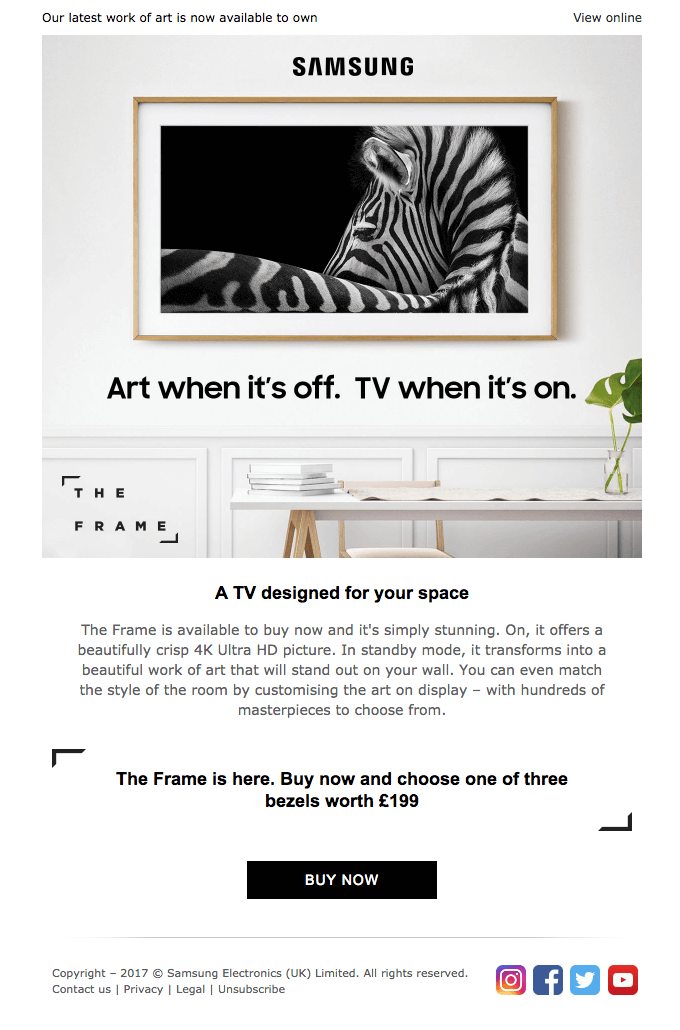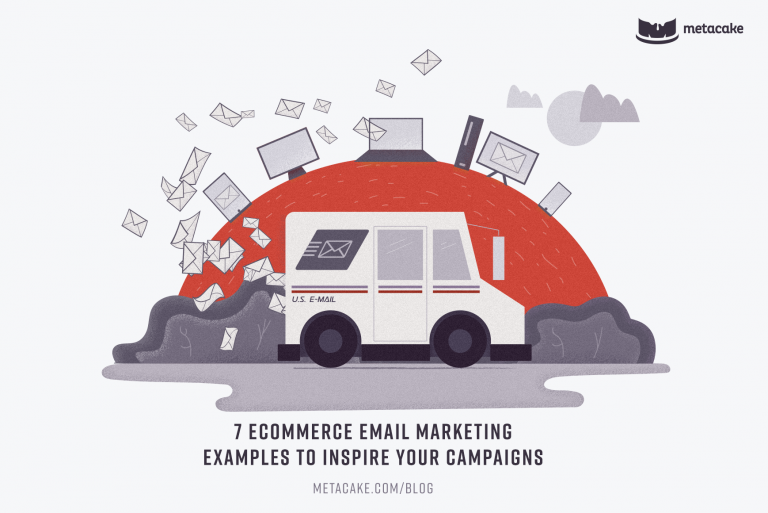Email is an incredibly important communication channel for ecommerce stores. It is one of the main ways to drive ecommerce revenue. With email, you have a direct relationship with your customer and can personalize your communication in such a way that grows customer lifetime value.
But how? What should you write about?
Email Marketing Tips
Don’t Spam Your List
Many marketers are afraid of email, because when abused, your list quality can tank and unsubscribe rates can skyrocket quite quickly. This is a valid fear. Marketers do need to take care not to overwhelm or spam your list with too many emails and hard sells.
The key is to provide value in your emails and to be relevant. And of course, not to over communicate.
Start with Your Brand
It is important to be authentic with your audience, so starting with your brand story and values as a basis for all communication is key to maintaining a quality list. If you are communicating the underlying story of your brand through all of your emails and maintaining authenticity, you are off to a good start.
Use the 2 to 1 Ratio
That is use a 2 to 1 ratio for value emails to sales emails. To be clear, that means that for every 3 emails that you send, only 1 of them should be a hard sales or offer email. The other 2 should be content emails that give education, information, or inspiration that is relevant and interesting to your audience.
What are the most effective email marketing campaigns?
There are 2 different categories of emails that are important to talk about.
Automated Email Sequences
The first are automated email sequences in which a customer action triggers a series of emails. The trigger could be customer subscribing to your list, a purchase, viewing a particular page on your site, etc. Here are a few sequences we recommend you have set up on your site.
Sign up or Pre-purchase
As soon as you get someone’s email address, you should have a welcome email series trigger that introduces your new subscribers to your brand and your products.
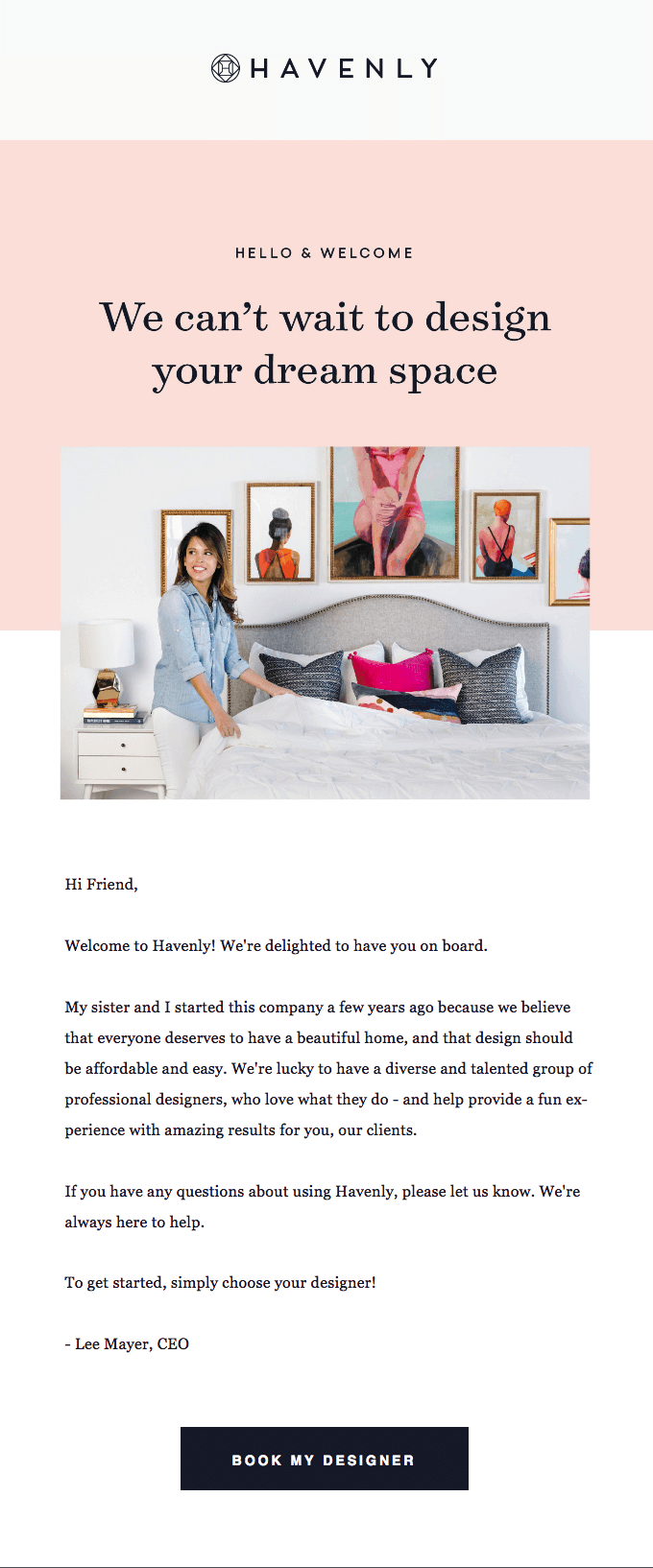
Post-purchase
Similarly, immediately after someone purchases one of your products, you should trigger an email sequence. A purchase is not the end of the relationship. Follow up with your customer to give them important information about your product and request a review once the item has been received. You can also ask them to share your brand with friends and offer coupons to nurture future sales.
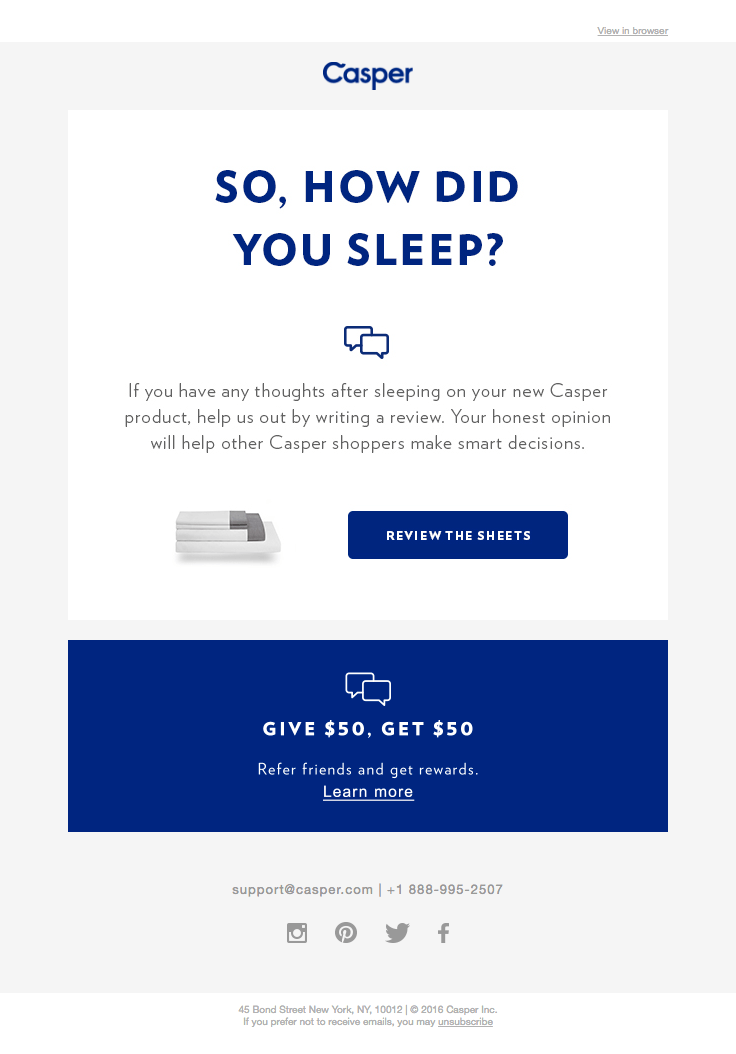
Abandoned cart
Another email sequence that you should absolutely have in place is an abandoned cart follow up series. People who go to through the process of browsing your site and filling up your cart are so close to a purchase. Don’t let these people go! You’re much more likely to convert them than a new customer just entering the funnel. We recommend sending a series of 3 emails after an abandoned cart. Send the first after just an hour or two, another the following day, and a final reminder (perhaps with a coupon to seal the deal) a few days later.

One-Off Email Campaigns
The second are one-off email campaigns. These are the more typical emails you would think of around promotions or content. These are triggered based on your promotional and content calendar and are typically independent from custom actions (although you would still want to segment your list to make sure you are sending the most relevant content possible to each segment).
Brand content
Customers are interested in more than just product information and offers. They want to know more about your brand. Test including behind the scenes emails (such as what goes into the making of your product or who are the people behind the product) and brand stories (such as why does your company exist, how did it come about, and what drives your brand).

Educational content
If a customer has purchased your product (or is thinking about purchasing your product), there is likely some educational content that can either help them make a purchase decision or help them get the most out of the product that they already own. Try emails including customer stories (for example, how real customers are using your product or how your brand has changed something in their lives) and product features (outlining features and benefits of your product that may not already be apparent) to help your subscribers get the most out of your product.
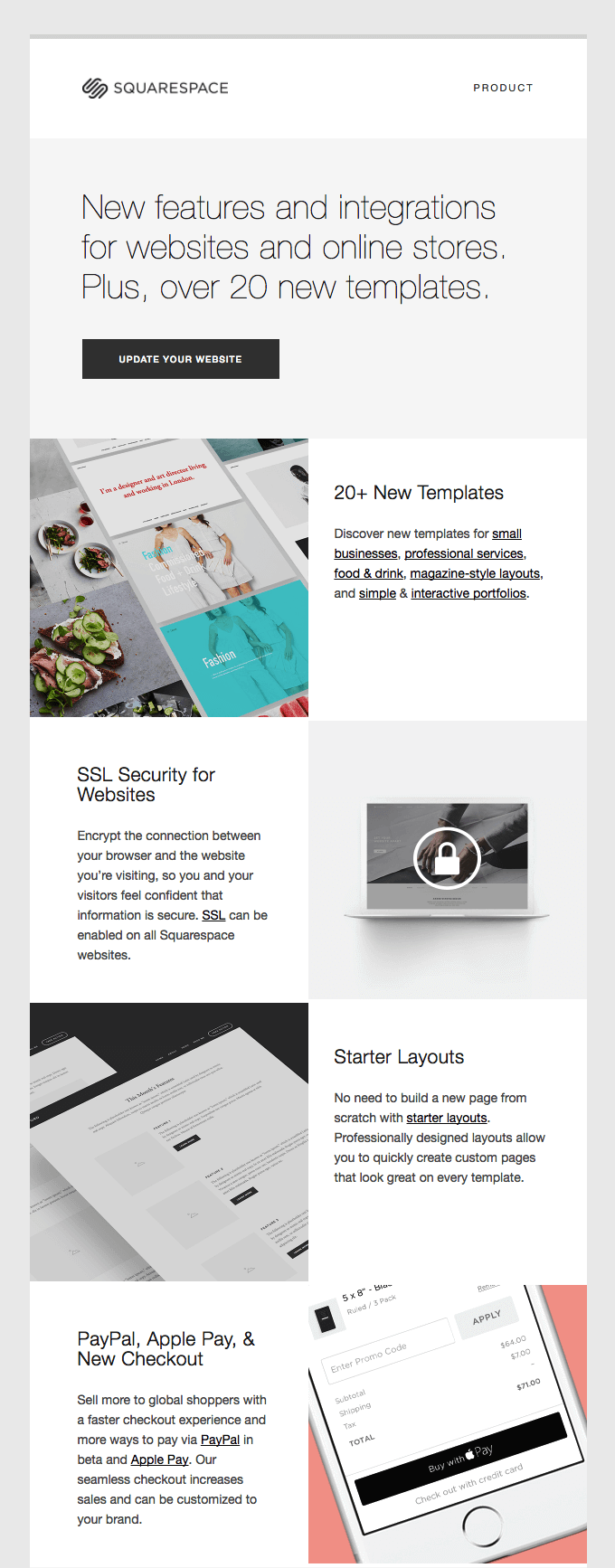
Promotions
Obviously hard sales emails belong in your email marketing mix. Just make sure not to send too many sales emails too often. Promotions around holidays or seasons that make sense for your brand are typically the most effective. Another great type of promotion to run is a VIP promotion. Reward your best customers for their loyalty and offer them special deals. This could be a formal rewards program or just a nice way to show your appreciation to customers that are loyal to your brand.
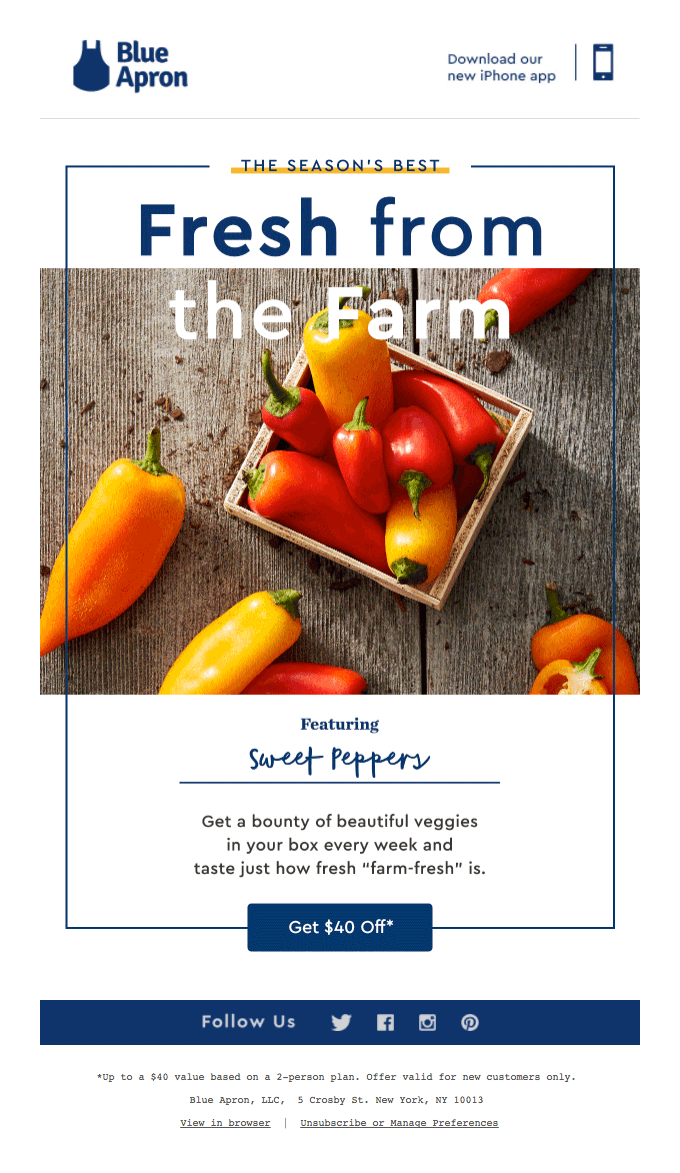
New product announcements
Make sure to let your customers know when a new product or improved product comes out. It is important to show that you are continuing to innovate and move forward and of course, it wouldn’t hurt to close some additional sales.
